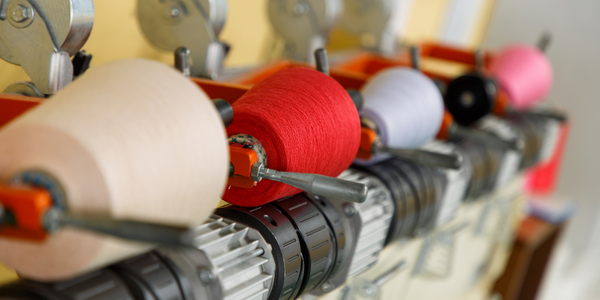技术
- 应用基础设施与中间件 - 数据交换与集成
- 可穿戴设备 - 手表/手套/腕上电脑
适用行业
- 服装
- 海洋与航运
适用功能
- 采购
- 仓库和库存管理
用例
- 拣选/分拣/定位
- 时间敏感网络
服务
- 系统集成
- 测试与认证
关于客户
Vincero是一个价格实惠的手表品牌,旨在以合理的价格提供优质手表。该品牌针对年轻消费者,为他们提供信心助推器。顾客的普遍反应是对手表的质量和价格感到惊讶。 Vincero 的业务是国际化的,大约 35% 的业务来自国外。当该公司开始与 Skubana 合作时,有一个大约十人的小团队。尽管规模很大,但文塞罗一次管理着六到八到九个仓库。
挑战
Vincero 是一个经济实惠的手表品牌,由于其规模超出了舒适度,因此面临着挑战。该公司正在向新的地区、渠道、数量和类别扩张,事实证明这是一次令人痛苦的经历。该公司还需要处理管理多个仓库和履行国际订单的复杂性。每个国家的海关处理情况各不相同,Vincero 的团队只有十人左右,没有足够的资源来了解每个国家的所有税务规则和海关流程。此外,该公司严重依赖亚马逊进行销售,但这并没有带来客户忠诚度或有价值的客户信息。此外,文塞罗正在处理亚马逊的虚假退货问题。
解决方案
Vincero 转向了 Skubana,这是一款帮助他们简化销售渠道、自动化订单和供应商工作流程以及提供产品和订单分析的工具。 Skubana 的多仓库功能对 Vincero 具有重大吸引力,因为它允许他们利用不同的仓库,包括亚马逊的仓库。这帮助 Vincero 降低了运输成本和客户获取产品的时间。 Skubana 还将 Vincero 与 Global-e 集成,这有助于国际航运。 Skubana 的订单机器人层次结构使 Vincero 能够优化客户获取产品的速度以及管理库存的方式。 Skubana 还帮助 Vincero 减少对亚马逊的依赖,让他们只需点击几下即可重新安排库存。这节省了文塞罗无数的运输时间以及大量的海关费用和运输时间。
运营影响
数量效益

Case Study missing?
Start adding your own!
Register with your work email and create a new case study profile for your business.
相关案例.

Case Study
Fire Alarm System and Remote Monitoring Sytem
Fire alarm systems are essential in providing an early warning in the event of fire. They help to save lives and protect property whilst also fulfilling the needs of insurance companies and government departments.Fire alarm systems typically consist of several inter-linked components, such as smoke detectors, heat detector, carbon monoxide, manual call points, sounders, alarm and buzzer. The fire alarm system should give immediate information in order to prevent the fire spread and protect live and property.To get maximum protection a shoe manufacturer in Indonesia opted for a new fire alarm system to monitor 13 production sites spread over 160 hectars. Although the company had an existing fire alarm system, it could not be monitored remotely.It was essential that the new system would be able to be monitored from a central control room. It needed to be able to connect to the existing smoke detector and manual call point. Information should be easily collected and passed on to the Supervisory Control and Data Acquisition (SCADA) system. Furthermore, the system should have several features such as alarm management, auto reporting, being connected to many client computers without additional cost, and run 24/7 without fails. The company also needed a system which could be implemented without changing the architecture of the existing fire alarm system.

Case Study
IoT Applications and Upgrades in Textile Plant
At any given time, the textile company’s manufacturing facility has up to 2,000 textile carts in use. These carts are pushed from room to room, carrying materials or semi-finished products. Previously, a paper with a hand-written description was attached to each cart. This traditional method of processing made product tracking extremely difficult. Additionally, making sure that every cart of materials or semi-finished products went to its correct processing work station was also a problem. Therefore, the company desired an intelligent solution for tracking assets at their factories. They also wanted a solution that would help them collect process data so they could improve their manufacturing efficiency.

Case Study
Drill ship power challenge: hybrid solution solves distribution issues
Aspin Kemp & Associates (AKA), a manufacturer of electrical power and control systems headquartered in Montague, PEI, encountered one with its hybrid power initiative, the first hybrid drill floor destined for installation on ultra-deepwater drill ships operated by Transocean, Swiss offshore drilling contractors. Since on-site modification was impossible and scrap recycling of any modifications was unacceptable, the enclosures had to arrive ready-to-install.

Case Study
Retailer Uses RFID Scanner to Improve Efficiency
Patrizia Pepe wished to improve the logistics of their warehouse: accepting incoming goods from their production sites, movement of items throughout
the warehouse, and packaging of goods for distribution to the retail locations. They initially tried to use barcodes for this function. Because barcodes must be individually scanned within a line-of-sight, the acceptance of goods coming into the warehouse was too time consuming. Working with the University of Florence, Patrizia Pepe instituted a five-month pilot project beginning in August of 2009 to test the validity of an RFID solution. The pilot involved tagging of about 60,000 items for the second seasonal collection, and convinced the company to move forward with tagging all items.

Case Study
Monitoring and Controlling Automatic Mixing and Dispensing Machines
As technology advances, textile manufacturing has been transformed from a labor-intensive to a partially or fully automated industry. Automation is significant in all segments of textile production - from spinning to printing, and textile machinery manufacturers are constantly searching for new technologies and automation processes will increase the productivity of their machines. The color paste mixing and dispensing machine is an essential part of the printing and dyeing process. With the advantage of automatically computerized controls and database management, the system can significantly improve its dispensing precision, working efficiency and production quality as well as reducing material consumption.








